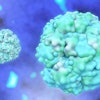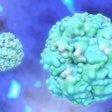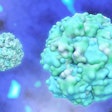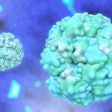
Prostate tumors have been found to evolve along multiple pathways, leading to two distinct disease types with “pivotal” implications for diagnosis and treatment, say scientists.
The discovery of the subtypes, termed evotypes, was made by applying artificial intelligence (AI) to data from DNA, according to findings published in Cell Genomics.
“This is really important because until now, we thought that prostate cancer was just one type of heterogenous cancer,” said senior author Professor Colin Cooper, PhD, from University of East Anglia’s Norwich Medical School in Norwich, U.K.
It is thought that patients with more aggressive disease may be more likely to have the “alternative form” of cancer.
“The two different forms of the disease may be completely different, and this new classification will shape everything in our understanding – from what causes it, to how it is treated,” Cooper said.
The research was led by the University of Oxford, the University of East Anglia, and the University of Manchester.
They are part of an international consortium, called the Pan Prostate Cancer Group, set up by researchers to analyze genetic data from thousands of prostate cancer samples across nine countries. The researchers analyzed the DNA of prostate cancer samples in 159 patients using whole genome sequencing and used trained neural networks to compare the DNA of the different samples.
They investigated the genomic evolution of prostate cancer through the application of three separate classification methods, each designed to investigate a different aspect of tumor evolution.
Integrating the results showed that there are at least two distinct evolutionary paths in prostate cancer to underpin the concept of classifying the cancers into evotypes.
“Taken together, our findings reveal prostate cancer disease types that arise as a result of divergent trajectories of a stochastic evolutionary process in which specific genetic alterations can tip the balance toward convergence to either route,” the authors wrote.
They say that their evolutionary model for prostate cancer disease types has significant implications for understanding progression, prognosis and treatment of this disease.
“It allows us to classify tumors based on how the cancer evolves rather than solely on individual gene mutations or expression patterns,” said Dr. Dan Woodcock of Oxford University’s Nuffield Department of Surgical Sciences.
However, the researchers say the precise criteria that differentiate so-called canonical-evotype tumors from those of the alternative evotype “remain to be rigorously defined.”
The research team is collaborating with Cancer Research UK (CRUK), which says that prostate cancer is the most common cancer affecting men in the U.K., with around 52,000 cases a year. The charity aims to develop a genetic test that, when combined with conventional staging and grading, can provide a more precise prognosis for each patient, allowing tailored treatment decisions.
“We are proud to have helped fund this cutting-edge work, which has laid the foundations for personalized treatments for people with prostate cancer, allowing more people to beat their disease,” said Dr. Rupal Mistry, CRUK's senior science engagement manager.



















